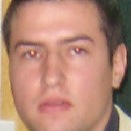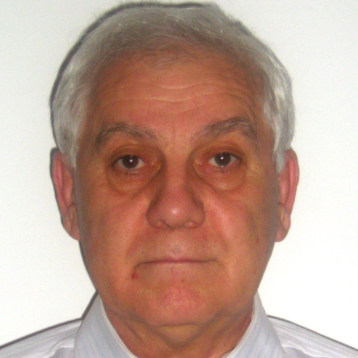International Journal of Information Technology and Computer Science (IJITCS)
IJITCS Vol. 9, No. 9, 8 Sep. 2017
Cover page and Table of Contents: PDF (size: 514KB)
Transient Processes on the Elements of Underground Installations
Full Text (PDF, 514KB), PP.1-10
Views: 0 Downloads: 0
Author(s)
Index Terms
Installation, Conductor, Grounding, Environment, Protection
Abstract
Transient processes on the elements of installation with electric conductive material may endanger the environment in urban areas and therefore action must be taken to mitigate possible consequences and protect the environment. Installation layers of lines of underground installation (electrical, gas, water…) that are used for the flow of energy/fluids do not provide a full protection and currents of static discharge discharged into the soil are particularly dangerous. At static discharges conductors receive high potentials and a strong electric field is created around them, which will be greater as the conductivity of the soil is weaker.
If the value of the field is greater than the disruptive voltage of the soil around earth wire (probe) the breakthrough occurs and the majority of soil becomes conductive. Particular problem are components of high frequency currents or voltages. Disorders of frequency in the range of 50 Hz to 5 kHz that can affect the selection of installation parameters, in compliance with all environmental criteria, are simulated by adapted subprogram in the part of the package Sym Power MATLAB.
Cite This Paper
Bojan L. Jovanović, Slobodan N. Bjelić, Nenad A. Marković, "Transient Processes on the Elements of Underground Installations", International Journal of Information Technology and Computer Science(IJITCS), Vol.9, No.9, pp.1-10, 2017. DOI:10.5815/ijitcs.2017.09.01
Reference
[1]Lou van der Sluis, Transients in Power Systems, John Wiley & Sons Ltd, 2001.
[2]A.A. Mahfouz, M.K. Mohammed, F.A. Salem, “Modeling, Simulation and Dynamics Analysis Issues of Electric Motor, for Mechatronics Applications, Using Different Approaches and Verification by MATLAB/Simulink”, International Journal of Intelligent Systems and Applications, IJISA2013, Vol. 5, No. 5, pp. 39-57, April 2013, DOI: 10.5815/ijisa.2013.05.06.
[3]Standards: IEC 60364-(4, 5, 6, 7) i IEC 60529, IEC 61032.
[4]M. Mišić, Z. Bogićević, S. Bjelić, “Electrodynamic Forces between Electrical Conductors and Cylindrical Magnetic Shields”, British Journal of Applied Science & Technology, 2015, Review Article, Vol. 11, Issue 4, DOI: 10.9734/BJAST/2015/20541.
[5]J. Kulda, “Magneticke pole v silnoproude electrotechnice”, Academia Praha Ceskoslovenska Akademie Ved., 1974.
[6]J. Nahman, “Grounding of the neutral point of distribution electrical networks,” Belgrade, 2004.
[7]S. Bjelić, N. Marković, J. Živanić, “Modelling of em current fields in the networks of underground installations with metal pipes,” Innovations and development, Institute for mining and metallurgy, pp. 49-62 UDK 621.31(045)=861, No. 1, Bor, 2013.
[8]Z. Bogićević, S. Bjelić, B. Jovanović, M. Mišić, “Neutral grounding points within the general distribution system as an element of environmental protection”, pp. 779-787, 3rd International Academic Conference, Places and Technologies, Belgrade, Serbia, 14.-15.04.2016.
[9]L. Van der Sluis, W.R. Rutgers, C.G.A. Koreman, “A physical arc model for the simulation of current zero behaviour of high-voltage circuit breakers”, IEEE Transactions on Power Delivery, pp. 1016-1022, Vol. 7, Issue 2, Apr. 1992, DOI: 10.1109/61.127112.
[10]D. Veličković, “Methods for solving of electrostatic fields,” STIL Niš, pp. 61-89, 1982.
[11]V. Srb, “Electric installations and low-voltage grids,” Tehnical Paper, Zagreb, 1991.
[12]J. Surutka, “Electromagnetics”, Construction Paper, Belgrade University, 1966, pp. 231-232, 378-386.
[13]J.R. Linders, “Electric wave distorsion. Their hidden costs and containment”, IEEE Transactions on Industry Applications, pp. 458-474, Vol. IA-15, Issue 5, Sept. 1979, DOI: 10.1109/TIA.1979.4503690.
[14]S. Bjelić, Z. Bogićević, “Computer Simulation of Theoretical Model of Electromagnetic Transient Processes in Power Transformers”, Information Technology and Computer Science, IJITCS2013, Vol. 6, No. 1, 1-12 Published Online December 2013 in MECS, DOI: 10.5815/ijitcs.2014.01.01.
[15]E.G. Andreeva, D.V. Šamec, “МКЕ анализ стационарных магнитных полей с помощью программного пакета АНСYС”: Učeb. Posobie. Omsk”, Izdvo OmGTU, 2002, pp. 92.
[16]N. Marković, S. Bjelić, U. Jakšić, Z. Bogićević, “Graphical zero-sequence cut-offs method of determining of fault to earth in electrical lines,” pp. 73-76, IEEE Catalog Number: CFP08481-PRT, 9th Symposium on Neural Network Applications in Electrical Engineering, IEEE Conference Publications, Faculty of Electrical Engineering, University of Belgrade, Serbia, September 25-27, 2008, DOI: 10.1109/NEUREL.2008.4685567.
[17]Z. Bogićević, S. Bjelić, P. Spalević, M. Mišić, “Graph-Analytical Method of Determining Impedance in Electrical Transformers, Mathematical Problems in Engineering,” September 2015, Research Article ID 745629, http://dx.doi.org/10.1155/2015/745629.
[18]S. Bjelić, N. Jović, “Estimation of deep changes of the specific resistance of the ground by geoelectric probing in the industrial complex “Trepca” in Zvecan,” Tehnika Belgrade, 63; 15a; ISSN: 0040-2176, 2008.
[19]MATLAB SIMULINK Sim Power System, Copyright 1984-2002 The Math Works, Version 6.5.0,180913a, June 2, 2000.


